Snowstorm is a censorship-blocking VPN that might actually work
Until now, one of the best tools to get around internet censorship has been a hastily made prototype called Snowflake, built seven years ago by a concert pianist. But Snowflake can be difficult to set up for users in censored countries, and it’s also unbearably slow for modern internet uses such as streaming video.
Now, Snowflake is getting a major upgrade that lets it work more like a traditional VPN. The new version, called Snowstorm, is launching in a private, invite-only beta as a stand-alone MacOS app—previous versions could only be activated from inside a web browser—and it’s also much faster. The newly formed company behind it, also called Snowstorm, has raised $1 million to hire full-time developers and maintain the code.
The fundamental concept is the same, though: By relying on a network of volunteers to host proxy servers and using a protocol that makes all communications look like video chat, Snowstorm is more difficult to block than a standard VPN. That makes it useful for evading censorship, but also for, say, watching another country’s local streaming TV catalog.
“The point of this is to break censorship and bypass censorship,” says Serene, Snowstorm’s lead developer. (She only goes by her first name for security reasons.) “So if you’re trying to watch Netflix . . . this certainly solves that problem, and it solves it in a way that even Putin can’t stop you.”
‘Are you censored?’
Launch the Snowstorm app and click the “Start” button, and you’ll be presented with one question: “Are you censored?”
Clicking “Yes” will connect you with another user who’s volunteered to act as a proxy, routing your traffic through their network. Clicking “No” allows you to become a volunteer, so that users who are censored can access the internet through your connection.
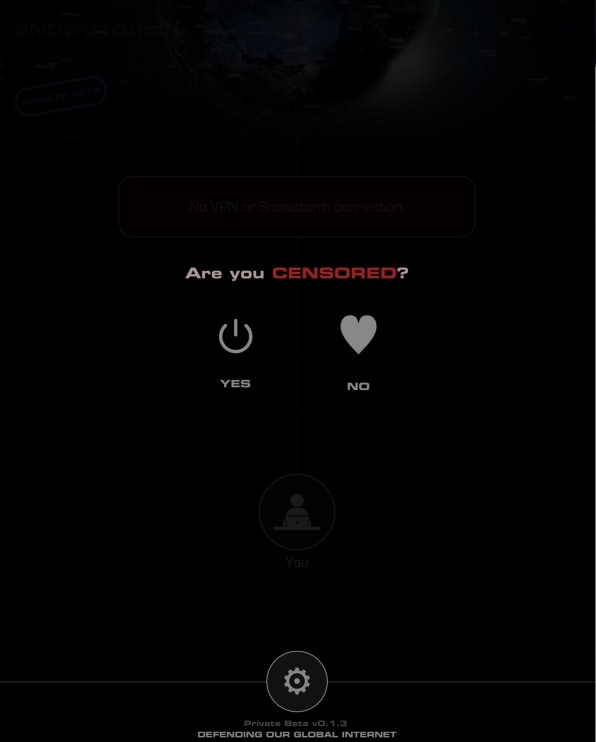
Behind the scenes, Snowstorm creates a connection using WebRTC, a web technology that’s commonly used for video chat. For censors, that makes Snowstorm traffic tough to distinguish from a video call, and the transient nature of the Snowstorm’s volunteer network makes the connections difficult to block. Serene says the network has roughly 115,000 volunteer nodes up and running every day, and the existing Snowflake network sees between six million and nine million daily connections.
“It’s very hard to keep up with so many temporary proxies coming in and out of existence,” Serene says. “It’s also impossible to block the traffic unless you block your entire country’s ability to have video calls.”
Until now, Serene’s work has been closely associated with Tor, a browsing technology that relays connections through a volunteer network to preserve users’ anonymity. Although some countries block direct access to Tor by analyzing network traffic, it’s possible to disguise that traffic through a concept called pluggable transports.
Snowstorm and its predecessor Snowflake are examples of pluggable transports, and while they aren’t the only ones, they have the advantage of being simple for volunteers to use.
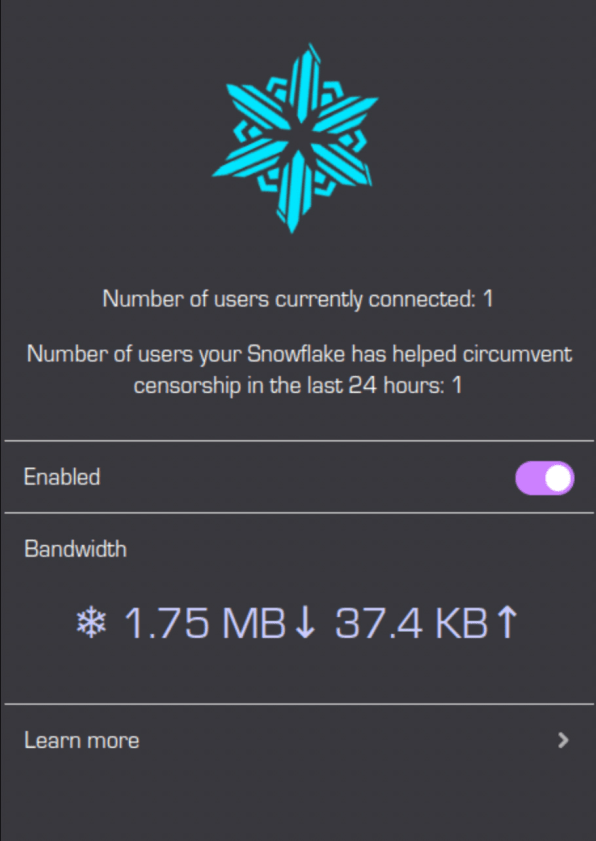
“With previous bridges and pluggable transports, if you wanted to be a host of one it would require a lot of knowledge and time to set up, and potentially you would have to even be running a Linux server,” says Cooper Quintin, a senior staff technologist with the Electronic Frontier Foundation. “With Snowflake though, all you have to do to help people circumvent internet censorship is install a browser extension.”
Snowstorm builds on the original work of Snowflake by making it faster and even more convenient to access. Users can run it as a dedicated app—first for Mac, but eventually Windows and Linux—and it’s been rearchitected to split WebRTC traffic among peers. That way a single bad connection doesn’t cause a bottleneck.
“I can stream high-quality YouTube videos and Netflix using this,” Serene says.
More than just Tor
That said, connecting with the Tor network is still likely to result in a slow connection. For that reason, Snowstorm will also allow users to chain their connections with other VPNs, or potentially with other Snowstorm proxies that are faster.
The goal, Serene says, is to let users make trade-offs between privacy and speed. While Tor will continue to be the best option for staying anonymous on the internet, other connections may allow for faster speeds while preserving some level of privacy.
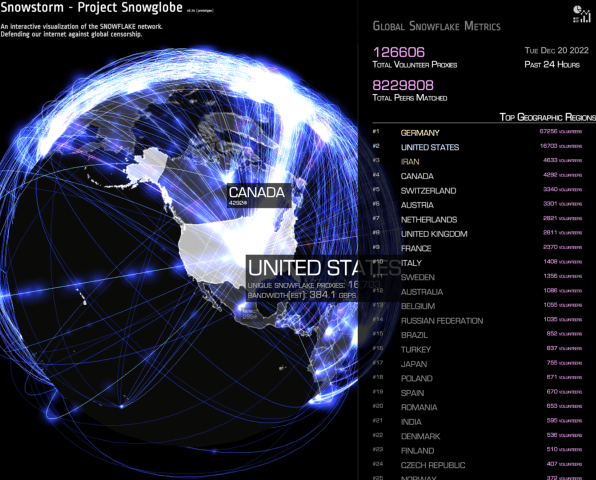
“[Snowstorm] is just the first hop that breaks the censorship, and then lets you get to the rest of the internet however you want to,” she says.
That doesn’t mean Snowstorm isn’t entirely censorship-proof. Quintin notes that countries could always cut off citizens from the global internet entirely—as Iran did during protests in 2019—in which case proxies wouldn’t help. Still, he’s not aware of any cases where Snowflake—Snowstorm’s predecessor—has been specifically blocked by any censor.
The business of beating censorship
Serene hadn’t expected to be spending this much time building upon Snowflake. After releasing the original prototype early 2016 as part of a fellowship with the Open Technology Fund, she left the technology world to focus on working as a concert pianist. The Tor Project largely carried the project forward from there by integrating it into its web browser.
Russia’s invasion of Ukraine—and its subsequent ramping up of internet censorship—made Serene realize that a new version was in order.
“They are able to block almost every VPN, and one of the main routes that they couldn’t block is Snowflake,” she says. “Suddenly the usage goes way up, and since then I’ve had to refocus and make sure this thing works for everyone who needs it.”
To that end, Serene is trying to build a business around Snowstorm, raising $1 million from 1517 Fund, Tyler Cowen of Emergent Ventures, and a group of private angel investors. She has a team of five people working on the software, and it will eventually have a premium subscription model similar to other VPNs. (Serene says it will always be free in heavily censored countries.)
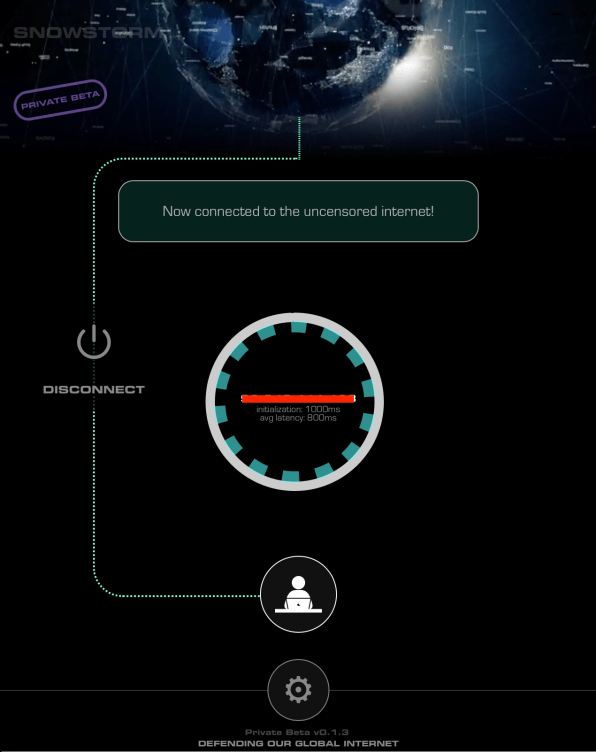
Serene may also offer Snowstorm’s tech to existing VPN vendors. Whereas traditional VPNs must operate their own network of servers to handle users’ connections, Snowstorm offloads the job to volunteers, which is both more resistant to censorship and cheaper to operate.
A lot of this does seem to be up in the air at the moment. It’s unclear, for instance, how Snowstorm will incentivize a robust network of volunteers for general VPN use (though a prerelease version does hint at a “leaderboard” feature for proxy hosts) or what it’ll cost for users in free countries. Meanwhile, certain key features, such as system-wide Tor connections and chaining with other Snowstorm proxies, are still under development.
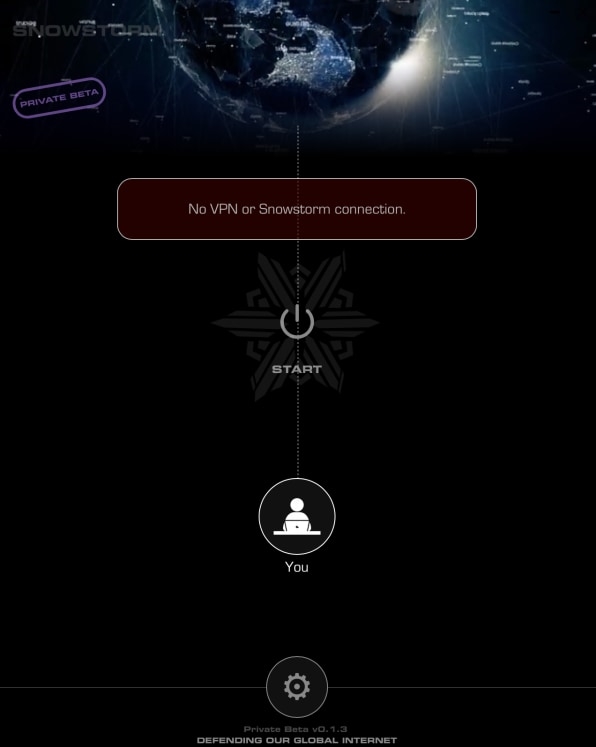
There’s also no guarantee that governments won’t find a way to finally block Snowflake and Snowstorm. But that’s one reason why it’s evolving into a proper business to begin with.
“The prototype of stuff I threw together years ago is the thing that’s being used in war zones,” Serene says. “It requires a really good, sustainable development team to actually build and maintain and support this work.”
(38)



